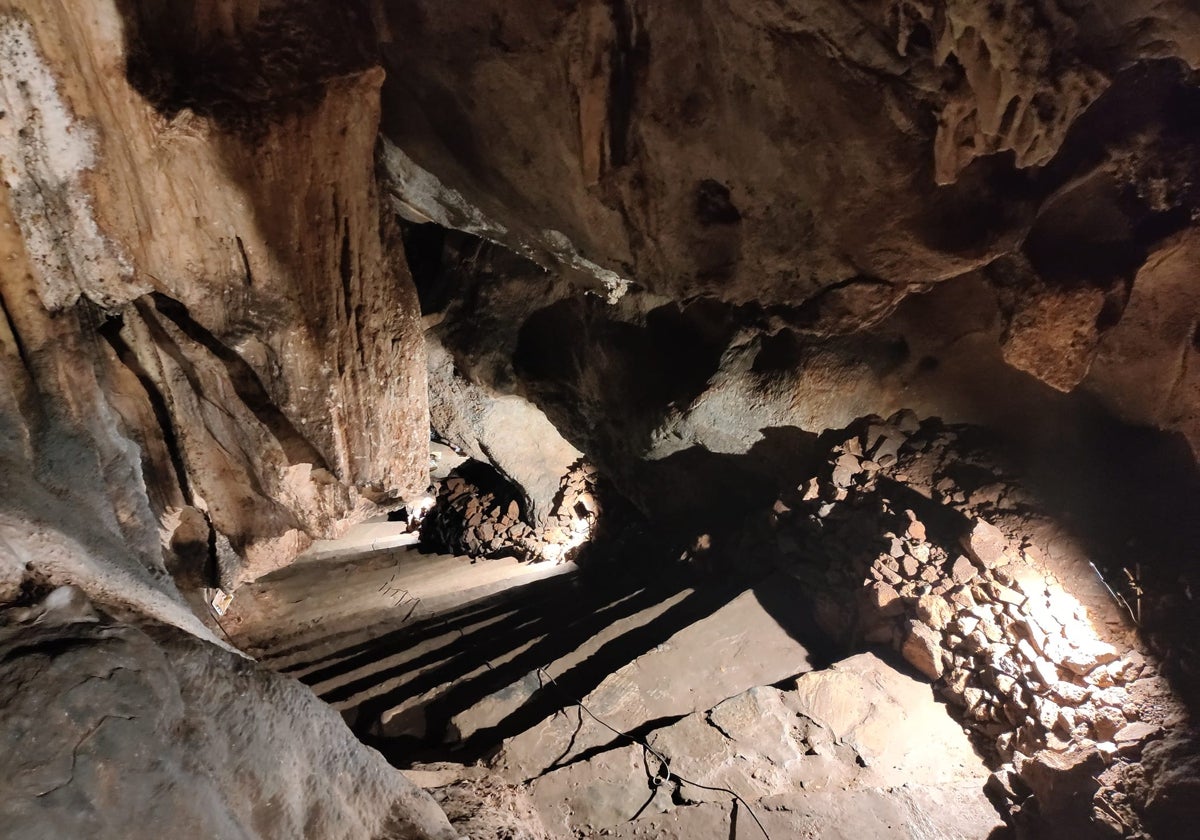Ardales takes first step towards making its Palaeolithic cave a World Heritage site
The local council of the Malaga town has unanimously approved the adhesion to the Unesco candidacy, which makes it the first of the nine municipalities involved in a process that should be concluded by the central government
The municipality of Ardales has taken a decisive step towards having its undergound treasure - the iconic Cueva de Ardales - internationally recognised. The local council has unanimously approved the cave's formal adhesion to the candidacy that aspires to add a group of Malaga province caves decorated with Palaeolithic art to the Unesco World Heritage list.
This is the first institutional move in a process that will combine a solid scientific analysis with a complex political and administrative approach. The objective: achieve the unanimous backing of the nine municipalities involved, as well as the provincial authority, the Andalusian regional government and Spain's central government - the only body authorised to officially present the candidacy to Unesco.
The initiative took shape at a meeting held on 6 June at the Nerja cave, where technical and political representatives from the town halls of Antequera, Benaoján, Cortés de la Frontera, Benalmádena, Malaga, Marbella, Nerja, Rincón de la Victoria and Ardales agreed to join forces to protect and promote this unique heritage site. The Nerja cave research institute is responsible for the coordination of the process, which will centralise the drafting of the technical dossier, the communication strategies and the fulfilment of the requirements demanded by the international organisation.
The Ardales cave is a fundamental part of this proposal. Inside, more than 1,000 Palaeolithic motifs have been preserved, of which more than 700 are aniconic representations - hands, dots, bars, stains - together with a unique collection of human and animal figures. Uranium-thorium dating published in the Science journal in 2018 places some of these artistic expressions between 65,500 and 38,600 years ago, making this cave one of the oldest examples of European prehistoric art.
1,000 cave motifs
The value of the cave goes beyond its paintings. Archaeological excavations have documented continuous human occupation from the Middle Palaeolithic to the Iron Age, including the Neolithic and Upper Palaeolithic periods. The comprehensive status of Ardales has made it a key location for scientific research and heritage outreach in Europe.
Since its opening to the public in 1985, the cave has adopted a model of restricted and guided visits, compatible with the conservation of its delicate remains. More than 6,000 people visit this space every year, accompanied by specialised staff. Their experience is completed with a visit to the Ardales Prehistoric interpretation centre.
Long but possible road
Recognition as a Unesco World Heritage site does not come easily. To achieve this goal, the dossier must demonstrate the exceptional universal value of the cave complex, its authenticity, state of conservation, protection mechanisms and coherent long-term management. In addition, full political consensus is necessary: Unesco requires the unanimous approval of the town halls involved as a guarantee of institutional stability.
Once this local endorsement has been completed, the dossier will be submitted to the Junta de Andalucía, which will forward it to the Spanish government. Only then can the formal process before the World Heritage committee begin. A minimum period of five years is estimated for the technical evaluation, the inspection visits and the final decision.
In the meantime, the municipalities are already working on the creation of a common image, with a website, informative materials, signage and a shared narrative that presents the site as a coherent whole. The experience of the Dolmens of Antequera, which achieved its inclusion in the Unesco list in 2016, serves as a close and encouraging reference.
With the approval of its membership, Ardales becomes the first municipality to formalise its commitment to this collective project. A gesture that not only seeks international prestige, but also reflects a firm commitment to conservation, culture and sustainable development of the territory.


Comentar es una ventaja exclusiva para registrados
¿Ya eres registrado?
Inicia sesiónNecesitas ser suscriptor para poder responder.
Necesitas ser suscriptor para poder votar.